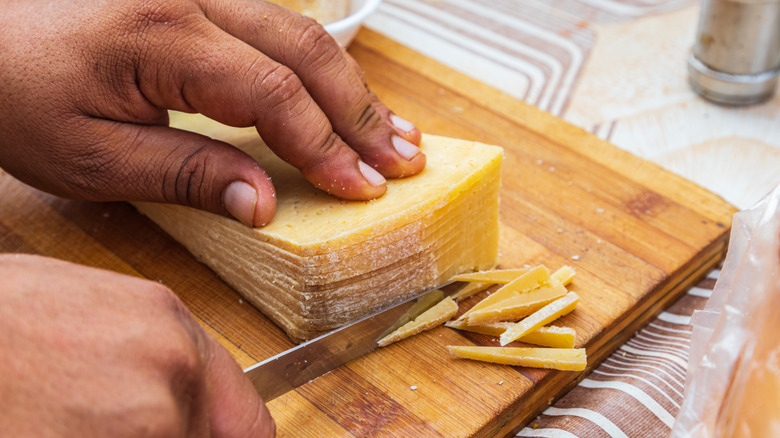Which Cheese Rinds Are Actually Edible?
If you've ever found yourself face-to-face with a beautiful charcuterie board and been stumped by rinds on any cheeses, you're not alone. Not all cheese rinds are meant to be eaten, but plenty are. Knowing the difference not only makes your cheese-eating experience more enjoyable, but also makes your friends think you're an expert cheesemonger at your next party.
There are a variety of edible cheese rinds, including bloomy, natural, and washed. There are even rinds flavored with seasonings such as herbs and spices, which are absolutely intended to be eaten. These and similar rinds bring a depth of flavor and texture to cheese that improves the whole experience of eating it. Others protect the cheese, such as the soft, white, bloomy rind found on cheeses such as Brie and Camembert.
Other cheese rinds are only technically edible – but you probably won't enjoy it. Waxy rinds, which seal the cheese while it ages to prevent moisture loss, should be peeled off and discarded before eating the cheese it protects. You can find waxy rinds on cheeses such as Gouda, Manchego, and Derby. Since they're sealed in food-safe wax, it won't hurt if you swallow a bite or two of rind. Other cheeses have a bandage-wrap rind, which uses a cloth wrap to keep moisture inside the cheese while letting it breathe. This helps the cheese age to perfection, giving it a deep flavor and a dense, crumbly texture.
What to do with cheese rinds
The different types of rinds are part of a cheese's personality. In fact, rinds can bring an added aesthetic to the best charcuterie boards by providing splashes of color and demonstrating the range of your creativity in creating your display. Making a beautiful cheeseboard is an art form, and Ina Garten has a great tip when it comes to making your selections.
Other rinds, such as the hard rind of Parmesan, aren't easy to eat and are best removed from the cheese before presenting it to company. These rinds shouldn't be tossed, however, since they make a great addition to soup. Simply toss the rind in during the cooking process to give your soup a rich, creamy flavor. Just remove it before serving. You can also store these rinds in the freezer by wrapping them tightly. This way, you have them on hand whenever you want to whip up a quick soup on a cold winter night.

